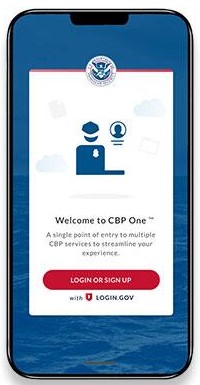In the quest for safety and protection, the pursuit of asylum in the United States stands as a crucial path for many around the world. Fleeing from persecution, violence, or the threat of harm in their home countries, individuals turn to the U.S. seeking refuge and a chance to rebuild their lives in a land known for its historical commitment to liberty and human rights. The process of seeking asylum, however, is fraught with complexities and uncertainties. It is a journey that demands courage, resilience, and a thorough understanding of legal procedures.
For those embarking on this daunting path, comprehending the U.S. asylum process is vital. This intricate procedure involves more than just crossing borders; it requires navigating the intricate maze of immigration laws, providing substantial evidence to support one’s claim, and often enduring a lengthy waiting period, all while adapting to a new culture and environment.
From understanding the eligibility criteria preparing your application to face the interview and dealing with the potential outcomes, this article is designed to provide practical advice and insights. Whether you are an asylum seeker, a supporting family member, or simply a concerned citizen, this guide will walk you through the essential steps of seeking asylum in the U.S., offering tips and resources to assist you on this challenging yet potentially life-changing journey.

Asylum is protection granted to foreign nationals who are in the United States or at the border and are unable or unwilling to return to their home country due to persecution or a well-founded fear of persecution. This persecution must be based on the individual's race, religion, nationality, membership in a particular social group, or political opinion. Asylum is a critical aspect of international human rights law, offering a lifeline to those facing serious threats to their safety and freedom in their countries of origin.
While asylum and refugee status are similar in protection and benefits, the key difference lies in the applicant's location. Asylum seekers apply while they are physically present in the U.S. or at a port of entry, while refugee status is sought from outside the U.S.
To qualify for asylum, applicants must demonstrate that they meet the definition of a refugee. They must prove past persecution or a well-founded fear of future persecution in their home country. Importantly, this fear must be connected to one of the five protected grounds mentioned earlier.
To be eligible for asylum in the U.S., applicants must meet specific criteria:
Applying for asylum is a multi-step process that requires attention to detail and adherence to procedural requirements:
After filing the application, the applicant will be scheduled for an interview with an asylum officer.
Post-interview, the asylum officer will make a decision which can be:
While the application is pending, applicants may:
Asylum seekers often face challenges such as language barriers, cultural differences, and the stress of legal proceedings.
Numerous organizations and resources are available to assist asylum seekers:
Asylum in the U.S. offers a lifeline to those in dire need of protection. While the process can be complex and challenging, understanding the procedures and accessing available resources can significantly increase the chances of a successful application. It's a journey of resilience and hope, leading many towards safety and a new start.
In the ever-evolving landscape of immigration and technology, using mobile apps by government agencies like the U.S. Customs and Border Protection (CBP) has raised significant privacy concerns, especially for vulnerable groups such as asylum seekers. This post delves into the recent developments regarding the CBP App and explores its implications for those seeking asylum.
The core issue here isn't just about technology; it's about the safety and privacy of individuals in vulnerable situations. While the app aims to streamline the immigration process, it inadvertently creates a dilemma: How do we balance efficiency with the right to privacy, especially for those fleeing persecution?

Our exploration goes beyond identifying the problem; we aim to understand its depth and offer insights. By dissecting the CBP App's functionality and its impact on asylum seekers, we uncover the layers of privacy concerns and the broader implications for human rights.
As you navigate through this post, you'll gain a comprehensive understanding of the CBP App's privacy implications for asylum seekers. This knowledge is not just for awareness but empowers you with a perspective that could shape how we view technology's role in humanitarian issues.
The CBP, responsible for border management and control, has integrated mobile technology into its operations. The CBP App, designed to streamline processes, also collects various types of data from users. While the app aims to enhance efficiency, its data collection practices have stirred up privacy concerns among asylum seekers who often require confidentiality and protection.
As the debate around the CBP App's use continues, privacy advocates and immigration experts are closely monitoring its deployment and usage. They are particularly concerned about how the data collected might be used, stored, and shared, and the potential risks it poses to asylum seekers whose safety often depends on their information remaining confidential.

For asylum seekers, the privacy implications are profound. The information collected by the app could potentially be accessed by various government agencies, posing a risk of misuse or unintended exposure. This raises questions about the safety and security of asylum seekers who are already in a vulnerable position.
The integration of technology in immigration processes, while beneficial in some aspects, carries significant privacy risks, particularly for asylum seekers. All stakeholders must understand these implications and work towards ensuring the privacy and safety of vulnerable groups.
For further information on immigration technology and privacy rights, follow our blog, or connect with legal experts and advocacy groups specializing in asylum and refugee rights.